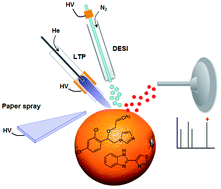Ambient (desorption/ionization) mass spectrometry methods for pesticide testing in food: a review
Abstract
Ambient mass spectrometry refers to the family of techniques that allows ions to be generated from condensed phase samples under ambient conditions and then, collected and analysed by mass spectrometry. One of their key advantages relies on their ability to allow the analysis of samples with minimal to no sample workup. This feature maps well to the requirements of food safety testing, in particular, those related to the fast determination of pesticide residues in foods. This review discusses the application of different ambient ionization methods for the qualitative and (semi)quantitative determination of pesticides in foods, with the focus on different specific methods used and their ionization mechanisms. More popular techniques used are those commercially available including desorption electrospray ionization (DESI-MS), direct analysis on real time (DART-MS), paper spray (PS-MS) and low-temperature plasma (LTP-MS). Several applications described with ambient MS have reported limits of quantitation approaching those of reference methods, typically based on LC-MS and generic sample extraction procedures. Some of them have been combined with portable mass spectrometers thus allowing “in situ” analysis. In addition, these techniques have the ability to map surfaces (ambient MS imaging) to unravel the distribution of agrochemicals on crops.



 Please wait while we load your content...
Please wait while we load your content...